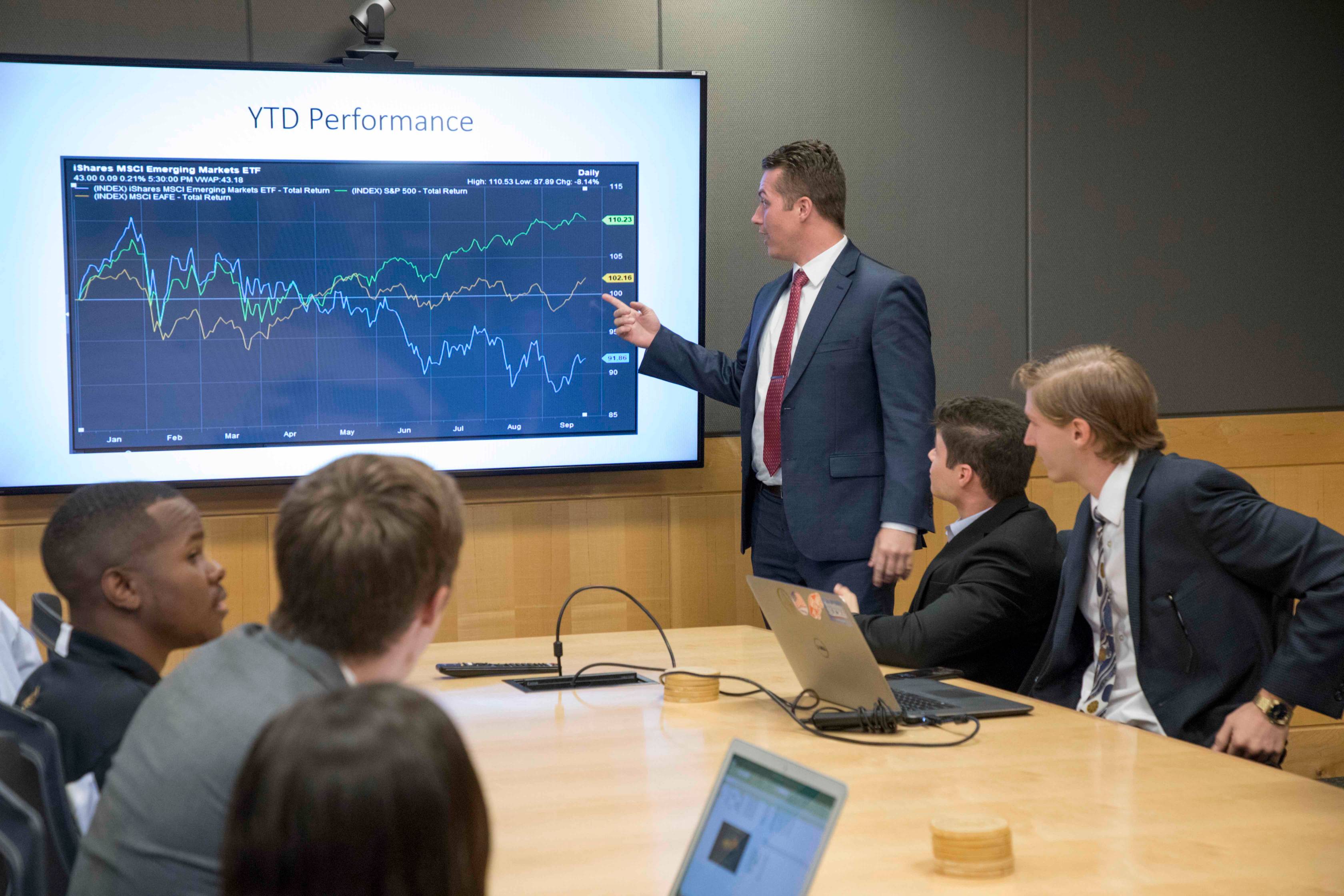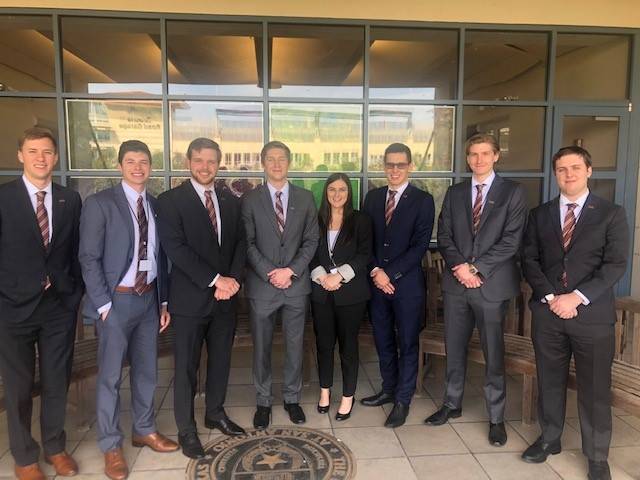
Investing money in theory is one thing, but when a semester-long class assignment could mean gains or losses for an important Texas State University endowment fund, there is more at stake than just a grade.
We encourage outstanding students who have a strong interest in investment analysis and management to apply! The McCoy Student Managed Investment Fund manages approximately $1.7 million on behalf of its client, the McCoy College Foundation. Students in SMIF make the asset allocation decision along with security selection decisions for the equity and fixed income portions of the SMIF portfolio. The first class to make investment decisions started in 2006, using seed money of $100,000 from a $20 million endowment gift from the McCoy College of Business Development Foundation.
Growth in the portfolio and additional contributions over the years have given the students a sizeable amount to invest. The endowment investment into the student-managed fund is now $75,000 a year. “We have real students managing real money,” says Dr. Holland Toles, who teaches and manages the program along with fellow co-founders Dr. Ken Moon and Dr. Bill Chittenden. “The difference in our program (compared to programs at most other universities) is that we have a real client we have to report to.”
Each semester, 20 to 30 students apply and are interviewed for admission into the class. Typically 8 to 10 students are admitted with another 8 to 10 returning for a second semester to gain as much real-world experience as possible within the confines of their studies. Overall GPA of 3.5 or higher are likely to gain admission.
The students have control over the buying and selling each semester, but those decisions are made as a class with guidance from the faculty. The group breaks into smaller sections to analyze business sectors and makes a class presentation on the strengths, weaknesses, and opportunities found in those sectors. That is followed later in the semester by an in-depth portfolio performance analysis and roundtable discussion. The class then decides how much to invest in each sector, giving the ones with the best prospective outcomes a heavier weight. The final step is to decide on which stocks to buy and which to sell. If the students are making the case to sell off an investment and put the money elsewhere, they have to justify their decision and not just sell an investment in order to buy something the current class prefers, Moon says.
Real-World Perspective
Through the process of buying and selling for the balanced portfolio of 75% equities and 25% fixed-income investments, the students are exposed to dealing with domestic equities, exchange-traded funds, international holdings, and derivatives.

Analyze business sectors

Roundtable discussion

Class presentation of analysis

Class decides dollar amount investment per sector

Portfolio analysis

Class decides which investments to buy and sell
McCoy students earn numerous competition awards

